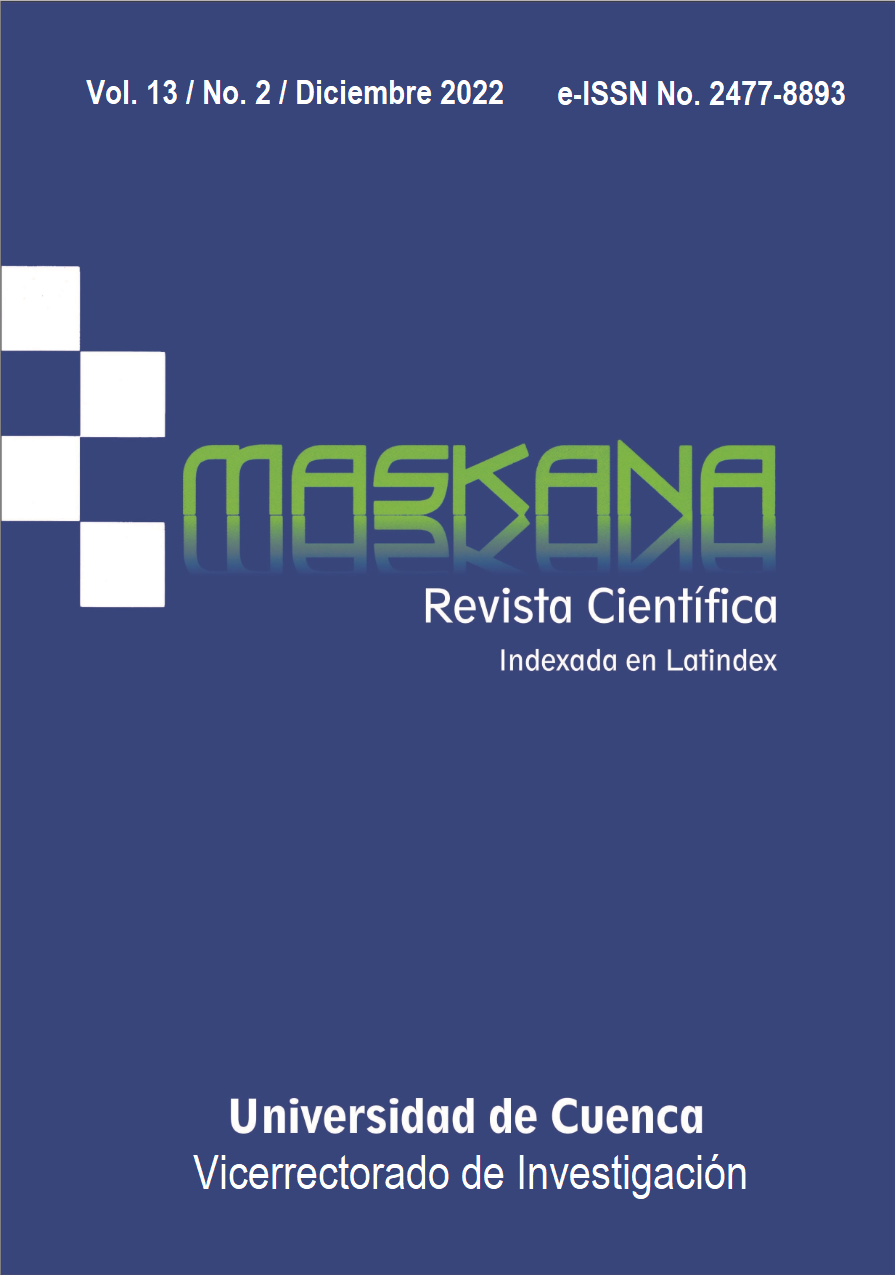Assessment of primary school teachers thinking styles: A case study
DOI:
https://doi.org/10.18537/mskn.13.02.02Keywords:
Thinking styles, teaching, primary schoolAbstract
Teaching thinking styles are a frame of reference that is part of educational psychology and guides teaching and learning. The objective of this research was to analyze the thinking styles applied by the teachers at the primary education level. A cross-sectional study was conducted aiming to find out the prevalence of the teaching thinking styles of a cohort of 107 teachers randomly selected from six primary schools in the urban area of the city of Cuenca in Ecuador, respectively 2 public, 2 public/religious, and 2 private schools. To collect the information, the Thinking Styles in Teaching Questionnaire by Grigorenko and Sternberg, translated by Serrano (1994), was used. The research reveals that the screened primary school teachers apply primarily a creative thinking style (Type 1), which corresponds to the psycho-pedagogic guidelines of the Ministry of Education for teaching orientation. The survey also showed that the thinking style of the teachers in the public schools tends more toward the normative thinking style (Type 2) compared to the teachers in the private schools. Factors such as age, gender, and class grade seem not to affect the thinking style of the teachers.
Downloads
Metrics
References
Armas, M., & Saavedra, M. (2007). Estilos de pensamiento, tipos de liderazgo y estilos educativos en docentes universitarios. Revista de Psicología (Trujillo), 9, 81-91. Obtenido de https://revistas.ucv.edu.pe/index.php/revpsi/article/download/519/503
Capella, M., & Andrade, F. (2017). Hacia una psicología ecuatoriana: una argumentación intergeneracional sobre la importancia de la cultura y la glocalidad en la investigación. Teoría y Crítica de la Psicología, 9, 173-195. Obtenido de https://discovery.ucl.ac.uk/id/eprint/1557052/7/Capella%20Palacios_178-695-1-PB.pdf
Doménech, F. (2012). Análisis de los estilos de pensamiento que utilizan los profesores españoles en clases. Revista de Educación, 497-522. Obtenido de https://www.educacionyfp.gob.es/dam/jcr:5a7de67f-7aa4-418e-8059-bd75e47b8b9f/re35823.pdf
Fabara, E. (2017). Hacia un estado del arte del arte de la investigación educativa en el Ecuador. En A. A. EDUCATIVA, El desarrollo de la investigación educativa en la actualidad (págs. 14-56). Cuenca: Casa Editora Universidad del Azuay.
Faul, F., Erdfelder, E., Lang, A., & Buchner, A. (2007). G*Power 3.1.9.2: A flexible statistical power analysis program for the social,behavioral, and biomedical sciences. Behavioral Research Methods, 39(2), 175-191. doi:https://link.springer.com/article/10.3758/BF03193146
Hernández, R., Fernández, C., & Baptista, M. (2014). Metodología de la Investigación (6ª ed.). México D. F.: McGraw-Hill.
Instituto Nacional de Evaluación Educativa. (s.f.). Resultado educativos, retos hacia la excelencia. Obtenido de https://www.evaluacion.gob.ec/wp-content/uploads/downloads/2016/12/Resultados-educativos-retos-hacia-la-excelencia.pdf
Instituto Nacional de Evaluación Educativa. (s.f.). Resultados educativos: Resultados de evaluación de desempeño a docentes. Obtenido de https://www.evaluacion.gob.ec/ineval-presento-resultados-educativos-2/
Mineduc. (2008). Obtenido de resultados pruebas censales SER Ecuador 2008: http://web.educacion.gob.ec/_upload/resultadoPruebasWEB.pdf
Mineduc. (2010). Actualización y fortalecimiento curricular de la educación general básica. Quito: Ministerio de Educación del Ecuador.
Mineduc. (2011). Instructivo: pruebas ser docentes. Quito: Ministerio de Educación y Cultura.
Mineduc. (2019). Currículo de los niveles de educación obligatoria (Segunda ed.). Quito: Ministerio de Educación del Ecuador.
OECD. (2005). Teachers matter: attracting, developing and retaining effective teachers. Paris: OECD Publications .
Serrano, F. (1994). Evaluación de la interacción de los estilos de enseñanza y aprendizaje en contextos escolares. Tesis Doctoral, Universidad de Murcia, Murcia: https://www.tesisenred.net/handle/10803/96054?locale-attribute=es
Sternberg, R. (1999). Estilos de pensamiento: Claves para identificar nuestro modo de pensar y enriquecer nuestra capacidad de reflexión. (G. Sánchez, Trad.) Barcelona, España: Paidós.
Sternberg, R., & Zhang, L. F. (2001). Perspectives on thinking, learning, and cognitive styles. (R. Sternberg, & L.-F. Zhang, Eds.) Mahwah, NJ: Lawrence Erlbaum Associates.
Zhang, L. F. (2001). Approaches and thinking styles in teaching. Journal of Psychology: Interdisciplinary and Applied, 135(5), 547-561.
Zhang, L. F. (2004). Thinking styles: University students' preferred teaching styles and their conceptions of effective teachers. Journal of Psychology, 138(3), 233-252.
Zhang, L. F. (2008). Teachers' styles of thinking: An exploratory study. The journal of Psychology, 142(1), 37-55.
Zhang, L. F., & Sternberg, R. (2002). Thinking styles and teachers’ characteristics. International Journal of Psychology, 37(1), 3-12
Zhang, L. F., & Sternberg. (2009). Perspectives on the nature of the intelectuall styles. New York: Springer Publishing Company
Published
How to Cite
Issue
Section
License
Copyright (c) 2022 Juan Rodríguez-Peralta

This work is licensed under a Creative Commons Attribution 4.0 International License.
Copyright © Autors. Creative Commons Attribution 4.0 License. for any article submitted from 6 June 2017 onwards. For manuscripts submitted before, the CC BY 3.0 License was used.
![]()
You are free to:
 |
Share — copy and redistribute the material in any medium or format |
 |
Adapt — remix, transform, and build upon the material for any purpose, even commercially. |
Under the following conditions:
 |
Attribution — You must give appropriate credit, provide a link to the licence, and indicate if changes were made. You may do so in any reasonable manner, but not in any way that suggests the licenser endorses you or your use. |
| No additional restrictions — You may not apply legal terms or technological measures that legally restrict others from doing anything the licence permits. |






